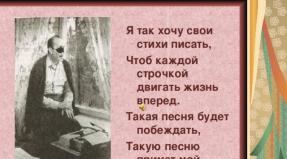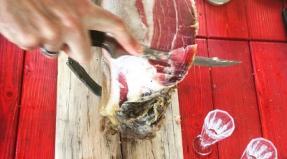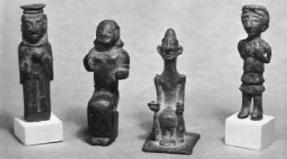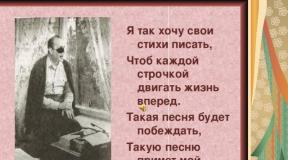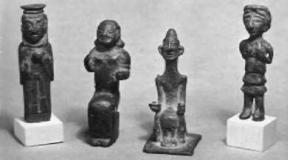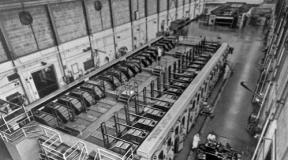Обзорная презентация университета гарвард. Гарвардский университет Гарвард англ Harvard University Общая
№ слайда 1
Описание слайда:
№ слайда 2

Описание слайда:
History Harvard was founded in 1636, the College trained many Puritan ministers The takeover of Harvard by the Unitarians in 1805 resulted in the secularization of the American college Charles W. Eliot, president 1869-1909, eliminated the favored position of Christianity from the curriculum while opening it to student self-direction
№ слайда 3

Описание слайда:
History During the twentieth century, Harvard"s international reputation grew as a burgeoning endowment and prominent professors expanded the university"s scope Explosive growth in the student population continued with the addition of new graduate schools and the expansion of the undergraduate program.
№ слайда 4

Описание слайда:
Organization Harvard today has nine faculties, listed below in order of foundation:The Faculty of Arts and Sciences and its sub-faculty, the School of Engineering and Applied Sciences, which together serve: Harvard College, the university"s undergraduate portion (1636) The Graduate School of Arts and Sciences (organized 1872) The Harvard Division of Continuing Education, including Harvard Summer School (1871) and Harvard Extension School (1910). The Harvard Medical School (1782) The Harvard School of Dental Medicine (1867). Harvard Divinity School (1816) Harvard Law School (1817) Harvard Business School (1908) The Graduate School of Design (1914) The Harvard Graduate School of Education (1920) The School of Public Health (1922) Harvard Kennedy School of Government (1936)
№ слайда 5

Описание слайда:
Campus Harvard"s 210-acre (85 ha) main campus is centered on Harvard Yard in Cambridge. Sophomore, junior, and senior undergraduates live in twelve residential Houses.The Harvard Business School and many of the university"s athletics facilities, including Harvard Stadium, are located on a 359-acre (145 ha) campus opposite the Cambridge campus in Allston. The Harvard Medical School, Harvard School of Dental Medicine, and the Harvard School of Public Health are located on a 22-acre (8.9 ha) campus in the Longwood Medical and Academic Area.
№ слайда 6

Гарвардский университет
Старейший изуниверситетов США, Гарвард
был основан 8 сентября
1636 года. Назван в честь
английского миссионера и
филантропа Джона Гарварда.
Хотя он никогда официально
не был связан с церковью, в
колледже обучалось главным
образом унитарное и
конгрегационалистское
духовенство. В 1643 году
английская аристократка Энн
Редклифф учредила первый
фонд для поддержки научных
исследований. В течение XVIII
века программы.
После гражданской войны в США, президент Гарварда Чарльз Эллиот после сорока лет правления (1869-1909) преобразовал колледж и зависимые от нег
После гражданской войны в США, президент Гарварда Чарльз Эллиот после сорока лет правления (1869-1909) преобразовал колледж и зависимые от него школы профессиональногообразования в централизованный исследовательский университет; Гарвард стал одним из основателей Ассоциации американских университетов в 1900 годуГарвардский
университет
поддерживает
дружеское
соперничество с
Массачусетским техн
ологическим институ
том
, которое восходит
ещё к 1900 году, когда
было официально
согласовано слияние
двух школ. Сегодня два
учебных заведения
сотрудничают в
плане совместных
Слайд 2
Слайд 3
Establishing the University
Established in 1636 by the Massachusetts legislature and soon thereafter named for John Harvard (its first benefactor), Harvard is the United States" oldest institution of higher learning, and the Harvard Corporation (formally, the President and Fellows of Harvard College) is its first chartered corporation. Although never formally affiliated with any denomination, the early College primarily trained Congregationalist and Unitarian clergy. Its curriculum and student body were gradually secularized during the 18th century, and by the 19th century Harvard had emerged as the central cultural establishment among Boston elites.
Слайд 4
Nowadays
Nowadays, the University comprises various academic institutions and has nurtured many prominent alumni. It is organized into eleven separate academic units-ten faculties and the Radcliffe Institute for Advanced Study-with campuses throughout the Boston metropolitan area. Harvard"s 209-acre (85 ha) main campus is centered on Harvard Yard in Cambridge, approximately 3 miles (4.8 km) northwest of Boston. The business school and athletics facilities, including Harvard Stadium, are located across the Charles River in the Allston neighborhood of Boston and the medical, dental, and public health schools are located in the Longwood Medical Area
Слайд 5
Graduators
Eight U.S. presidents have been graduates, and some 150 Nobel Laureates have been affiliated as students, faculty, or staff. Harvard is also the alma mater of sixty-two living billionaires, the most in the country.
Слайд 6
The Harvard University Library
The Harvard University Library is also the largest academic library in the United States, and one of the largest in the world.
Слайд 7
University seal Memorial Church Massachusetts Hall (1720), Harvard"s oldest building The Harry Elkins Widener Memorial Library College/school Year founded Harvard College 1636 Medicine 1782 Divinity 1816 Law 1817 DentalMedicine 1867 Arts andSciences 1872 Business 1908 Extension 1910 Design 1914 Education 1920 PublicHealth 1922 Government 1936 Engineering and Applied Sciences 2007
Посмотреть все слайды
Cлайд 1
Cлайд 2
 History Harvard was founded in 1636, the College trained many Puritan ministers The takeover of Harvard by the Unitarians in 1805 resulted in the secularization of the American college Charles W. Eliot, president 1869-1909, eliminated the favored position of Christianity from the curriculum while opening it to student self-direction
History Harvard was founded in 1636, the College trained many Puritan ministers The takeover of Harvard by the Unitarians in 1805 resulted in the secularization of the American college Charles W. Eliot, president 1869-1909, eliminated the favored position of Christianity from the curriculum while opening it to student self-direction
Cлайд 3
 History During the twentieth century, Harvard"s international reputation grew as a burgeoning endowment and prominent professors expanded the university"s scope Explosive growth in the student population continued with the addition of new graduate schools and the expansion of the undergraduate program.
History During the twentieth century, Harvard"s international reputation grew as a burgeoning endowment and prominent professors expanded the university"s scope Explosive growth in the student population continued with the addition of new graduate schools and the expansion of the undergraduate program.
Cлайд 4
 Organization Harvard today has nine faculties, listed below in order of foundation: The Faculty of Arts and Sciences and its sub-faculty, the School of Engineering and Applied Sciences, which together serve: Harvard College, the university"s undergraduate portion (1636) The Graduate School of Arts and Sciences (organized 1872) The Harvard Division of Continuing Education, including Harvard Summer School (1871) and Harvard Extension School (1910). The Harvard Medical School (1782) The Harvard School of Dental Medicine (1867). Harvard Divinity School (1816) Harvard Law School (1817) Harvard Business School (1908) The Graduate School of Design (1914) The Harvard Graduate School of Education (1920) The School of Public Health (1922) Harvard Kennedy School of Government (1936)
Organization Harvard today has nine faculties, listed below in order of foundation: The Faculty of Arts and Sciences and its sub-faculty, the School of Engineering and Applied Sciences, which together serve: Harvard College, the university"s undergraduate portion (1636) The Graduate School of Arts and Sciences (organized 1872) The Harvard Division of Continuing Education, including Harvard Summer School (1871) and Harvard Extension School (1910). The Harvard Medical School (1782) The Harvard School of Dental Medicine (1867). Harvard Divinity School (1816) Harvard Law School (1817) Harvard Business School (1908) The Graduate School of Design (1914) The Harvard Graduate School of Education (1920) The School of Public Health (1922) Harvard Kennedy School of Government (1936)
Cлайд 5
 Campus Harvard"s 210-acre (85 ha) main campus is centered on Harvard Yard in Cambridge. Sophomore, junior, and senior undergraduates live in twelve residential Houses. The Harvard Business School and many of the university"s athletics facilities, including Harvard Stadium, are located on a 359-acre (145 ha) campus opposite the Cambridge campus in Allston. The Harvard Medical School, Harvard School of Dental Medicine, and the Harvard School of Public Health are located on a 22-acre (8.9 ha) campus in the Longwood Medical and Academic Area.
Campus Harvard"s 210-acre (85 ha) main campus is centered on Harvard Yard in Cambridge. Sophomore, junior, and senior undergraduates live in twelve residential Houses. The Harvard Business School and many of the university"s athletics facilities, including Harvard Stadium, are located on a 359-acre (145 ha) campus opposite the Cambridge campus in Allston. The Harvard Medical School, Harvard School of Dental Medicine, and the Harvard School of Public Health are located on a 22-acre (8.9 ha) campus in the Longwood Medical and Academic Area.
Cлайд 6
 Students Harvard enrolled 6,655 students in undergraduate programs, 3,738 students in graduate programs, and 10,722 students in professional programs. The undergraduate population is 51% female, the graduate population is 48% female, and the professional population is 49% female. Undergraduate Graduate Professional U.S. Census African American 8% 3% 6% 12.1% Asian American 17% 9% 12% 4.3% White American 42% 42% 43% 65.8% Hispanic American 7% 3% 5% 14.5% Native American 1% 0.2% 0.6% 0.9% International student 11% 33% 22% N/A
Students Harvard enrolled 6,655 students in undergraduate programs, 3,738 students in graduate programs, and 10,722 students in professional programs. The undergraduate population is 51% female, the graduate population is 48% female, and the professional population is 49% female. Undergraduate Graduate Professional U.S. Census African American 8% 3% 6% 12.1% Asian American 17% 9% 12% 4.3% White American 42% 42% 43% 65.8% Hispanic American 7% 3% 5% 14.5% Native American 1% 0.2% 0.6% 0.9% International student 11% 33% 22% N/A
History Harvard was founded in 1636, the College trained many Puritan ministers The takeover of Harvard by the Unitarians in 1805 resulted in the secularization of the American college Charles W. Eliot, president , eliminated the favored position of Christianity from the curriculum while opening it to student self-direction

History During the twentieth century, Harvard"s international reputation grew as a burgeoning endowment and prominent professors expanded the university"s scope Explosive growth in the student population continued with the addition of new graduate schools and the expansion of the undergraduate program.

Organization Harvard today has nine faculties, listed below in order of foundation: The Faculty of Arts and Sciences and its sub-faculty, the School of Engineering and Applied Sciences, which together serve: Harvard College, the university"s undergraduate portion (1636) The Graduate School of Arts and Sciences (organized 1872) The Harvard Division of Continuing Education, including Harvard Summer School (1871) and Harvard Extension School (1910). The Harvard Medical School (1782) The Harvard School of Dental Medicine (1867). Harvard Divinity School (1816) Harvard Law School (1817) Harvard Business School (1908) The Graduate School of Design (1914) The Harvard Graduate School of Education (1920) The School of Public Health (1922) Harvard Kennedy School of Government (1936)

Campus Harvard"s 210-acre (85 ha) main campus is centered on Harvard Yard in Cambridge. Sophomore, junior, and senior undergraduates live in twelve residential Houses. The Harvard Business School and many of the university"s athletics facilities, including Harvard Stadium, are located on a 359-acre (145 ha) campus opposite the Cambridge campus in Allston. The Harvard Medical School, Harvard School of Dental Medicine, and the Harvard School of Public Health are located on a 22-acre (8.9 ha) campus in the Longwood Medical and Academic Area.

Students Harvard enrolled 6,655 students in undergraduate programs, 3,738 students in graduate programs, and 10,722 students in professional programs. The undergraduate population is 51% female, the graduate population is 48% female, and the professional population is 49% female. UndergraduateGraduateProfessionalU.S. Census African American8%3%6%12.1% Asian American17%9%12%4.3% White American42% 43%65.8% Hispanic American7%3%5%14.5% Native American1%0.2%0.6%0.9% International student11%33%22%N/A


Some other facts There are 2,110 professors, lecturers, and instructors serve, with 6,715 undergraduate and 12,424 graduate students. Harvard has the largest university endowment in the United States. At the end of June 2009, it was worth $25.7 billion, about 30% less than at the same time in Harvard Undergraduate Television (HUTV) is the Harvard College student-run Internet television network.

